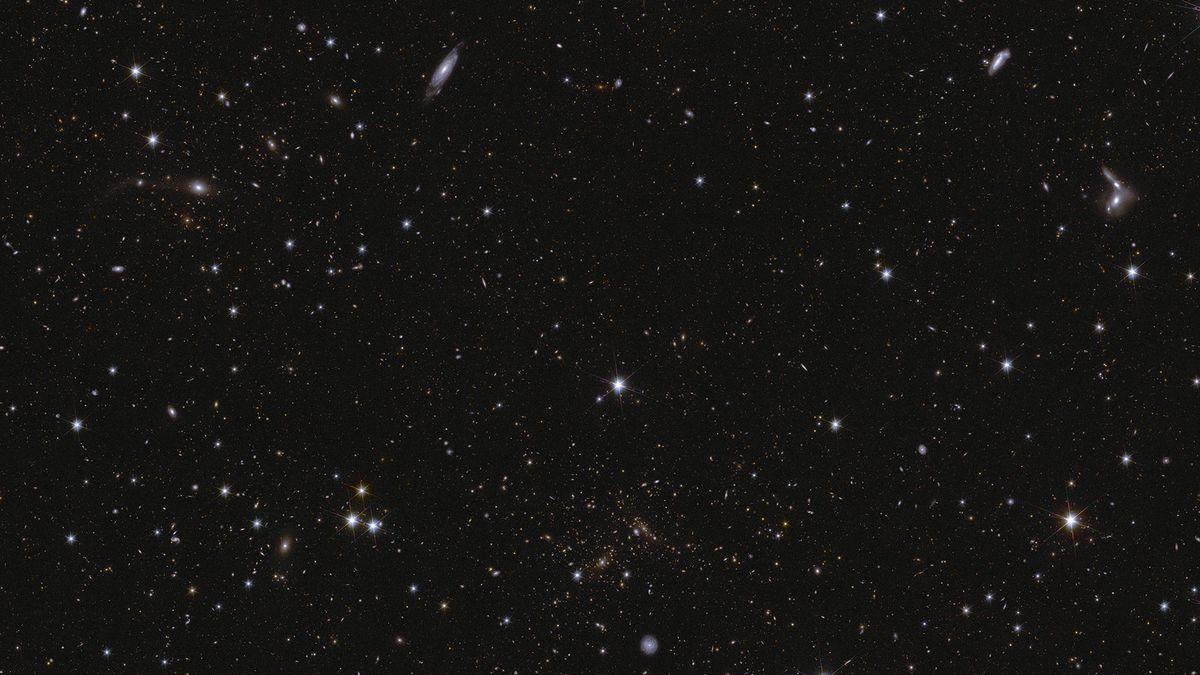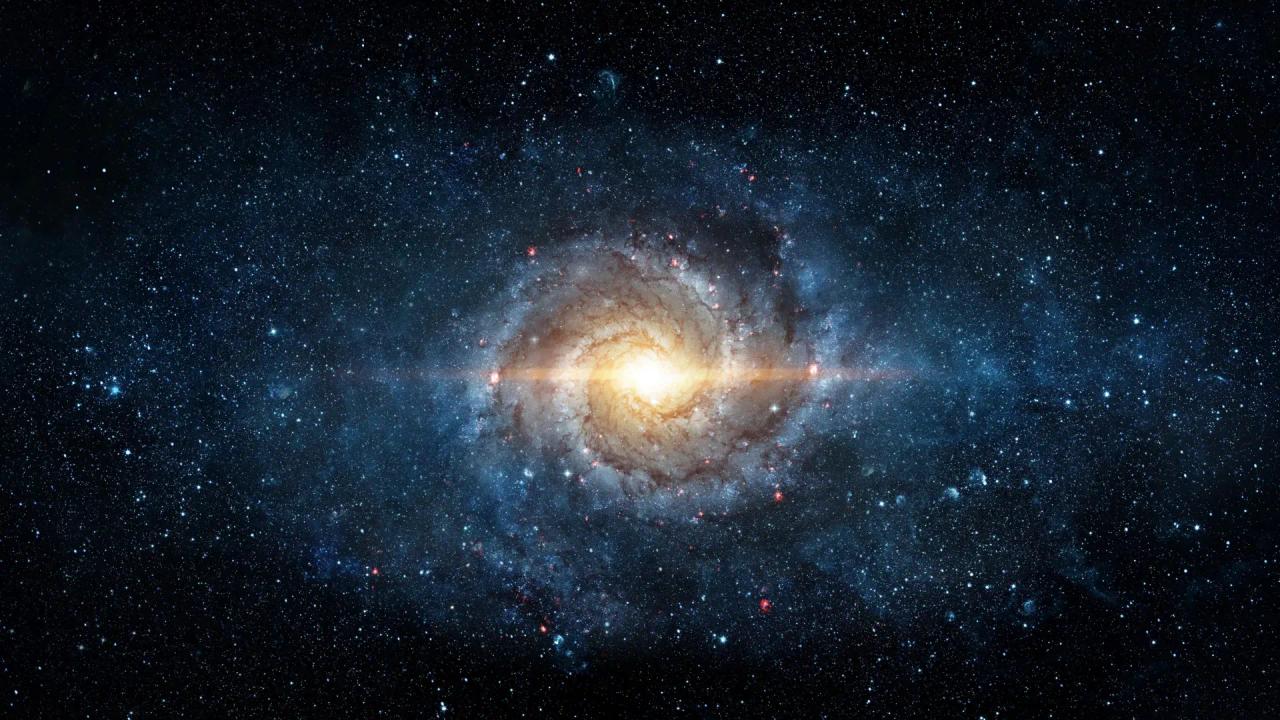Chile's Vera C. Rubin Observatory Unveils Groundbreaking 3,200-Megapixel Camera for Cosmic Exploration
2 Sources
2 Sources
[1]
Chile observatory captures the universe with 3,200-megapixel camera
SANTIAGO, June 27 (Reuters) - Chile's Vera C. Rubin Observatory, which boasts the world's largest digital camera, has begun displaying its first images of the cosmos, allowing astronomers to figure out how the solar system formed and even whether an asteroid poses a threat to Earth. Located on Pachon Hill in the northern region of Coquimbo, the 8.4-meter (27-1/2-foot) telescope has a 3,200-megapixel camera feeding a powerful data processing system. "It's really going to change and challenge the way people work with their data," said William O'Mullane, a project manager focused on data at Vera Rubin. The observatory detected over 2,100 previously unseen asteroids in 10 hours of observations, focusing on a small area of the visible sky. Its ground-based and space-based peers discover in total some 20,000 asteroids a year. O'Mullane said the observatory would allow astronomers to collect huge amounts of data quickly and make unexpected finds. "Rather than the usual couple of observations and writing an (academic) paper. No, I'll give you a million galaxies. I'll give you a million stars or a billion even, because we have them: 20 billion galaxy measurements," he said. The center is named after American astronomer Vera C. Rubin, a pioneer in finding conclusive evidence of the existence of large amounts of invisible material known as dark matter. Each night, Rubin will take some 1,000 images of the southern hemisphere sky, letting it cover the entire southern sky every three or four nights. The darkest skies above the arid Atacama Desert make Chile one of the best places worldwide for astronomical observation. "The number of alerts the telescope will send every night is equivalent to the inboxes of 83,000 people. It's impossible for someone to look at that one by one," said astrophysicist Francisco Foster. "We're going to have to use artificial intelligence tools." Reporting by Jorge Vega; Writing by Fabian Cambero; Editing by Adam Jourdan and Sandra Maler Our Standards: The Thomson Reuters Trust Principles., opens new tab Suggested Topics:Science
[2]
Chile Observatory Captures the Universe With 3,200-Megapixel Camera
SANTIAGO (Reuters) -Chile's Vera C. Rubin Observatory, which boasts the world's largest digital camera, has begun displaying its first images of the cosmos, allowing astronomers to figure out how the solar system formed and even whether an asteroid poses a threat to Earth. Located on Pachon Hill in the northern region of Coquimbo, the 8.4-meter (27-1/2-foot) telescope has a 3,200-megapixel camera feeding a powerful data processing system. "It's really going to change and challenge the way people work with their data," said William O'Mullane, a project manager focused on data at Vera Rubin. The observatory detected over 2,100 previously unseen asteroids in 10 hours of observations, focusing on a small area of the visible sky. Its ground-based and space-based peers discover in total some 20,000 asteroids a year. O'Mullane said the observatory would allow astronomers to collect huge amounts of data quickly and make unexpected finds. "Rather than the usual couple of observations and writing an (academic) paper. No, I'll give you a million galaxies. I'll give you a million stars or a billion even, because we have them: 20 billion galaxy measurements," he said. The center is named after American astronomer Vera C. Rubin, a pioneer in finding conclusive evidence of the existence of large amounts of invisible material known as dark matter. Each night, Rubin will take some 1,000 images of the southern hemisphere sky, letting it cover the entire southern sky every three or four nights. The darkest skies above the arid Atacama Desert make Chile one of the best places worldwide for astronomical observation. "The number of alerts the telescope will send every night is equivalent to the inboxes of 83,000 people. It's impossible for someone to look at that one by one," said astrophysicist Francisco Foster. "We're going to have to use artificial intelligence tools." (Reporting by Jorge Vega; Writing by Fabian Cambero; Editing by Adam Jourdan and Sandra Maler)
Share
Share
Copy Link
Chile's Vera C. Rubin Observatory, home to the world's largest digital camera, has begun capturing its first images of the cosmos, promising to revolutionize astronomical research and our understanding of the universe.
A New Era in Astronomical Observation
Chile's Vera C. Rubin Observatory has ushered in a new era of cosmic exploration with its groundbreaking 3,200-megapixel camera, the largest digital camera in the world. Located on Pachon Hill in the northern region of Coquimbo, this 8.4-meter telescope is set to revolutionize our understanding of the universe
1
2
.Unprecedented Imaging Capabilities
The observatory's powerful imaging system has already demonstrated its exceptional capabilities. In a mere 10 hours of observations focused on a small area of the visible sky, it detected over 2,100 previously unseen asteroids. This feat is particularly impressive when compared to the combined efforts of its ground-based and space-based peers, which discover approximately 20,000 asteroids annually
1
2
.Transforming Astronomical Research
William O'Mullane, a project manager at Vera Rubin, emphasized the transformative potential of this technology: "It's really going to change and challenge the way people work with their data." The observatory's ability to rapidly collect vast amounts of data opens up new possibilities for unexpected discoveries
1
2
.O'Mullane further illustrated the scale of data collection: "Rather than the usual couple of observations and writing an (academic) paper. No, I'll give you a million galaxies. I'll give you a million stars or a billion even, because we have them: 20 billion galaxy measurements"
1
2
.Nightly Sky Surveys
The Vera C. Rubin Observatory is set to conduct comprehensive nightly surveys of the southern hemisphere sky. Each night, it will capture approximately 1,000 images, allowing it to cover the entire southern sky every three to four nights. The observatory's location in Chile's Atacama Desert, known for its exceptionally dark skies, provides ideal conditions for astronomical observation
1
2
.The AI Challenge
The sheer volume of data generated by the observatory presents a significant challenge. Astrophysicist Francisco Foster noted, "The number of alerts the telescope will send every night is equivalent to the inboxes of 83,000 people. It's impossible for someone to look at that one by one." To address this, researchers plan to leverage artificial intelligence tools to process and analyze the vast influx of data
1
2
.Related Stories
Legacy of Vera C. Rubin
The observatory is named after American astronomer Vera C. Rubin, a pioneer in dark matter research. Rubin's work provided conclusive evidence for the existence of large amounts of invisible material in the universe, now known as dark matter. This naming choice pays homage to her significant contributions to our understanding of the cosmos
1
2
.Implications for Future Research
The Vera C. Rubin Observatory's unprecedented capabilities promise to advance our understanding of the solar system's formation and potentially identify asteroid threats to Earth. As astronomers harness the power of this new technology, we can anticipate groundbreaking discoveries that will reshape our comprehension of the universe and our place within it.
References
Summarized by
Navi
Related Stories
Euclid Space Telescope Unveils Cosmic Treasure Trove: 26 Million Galaxies Captured in First Data Release
21 Mar 2025•Science and Research

AI Breakthrough Enables First 100-Billion-Star Milky Way Simulation
17 Nov 2025•Science and Research

Record-Breaking Stellar Trio Discovered by NASA's TESS and AI
03 Oct 2024

Recent Highlights
1
Google launches Gemini 3 Flash as default AI model, delivering speed with Pro-grade reasoning
Technology

2
OpenAI launches GPT Image 1.5 as AI image generator war with Google intensifies
Technology

3
OpenAI launches ChatGPT app store, opening doors for third-party developers to build AI-powered apps
Technology





